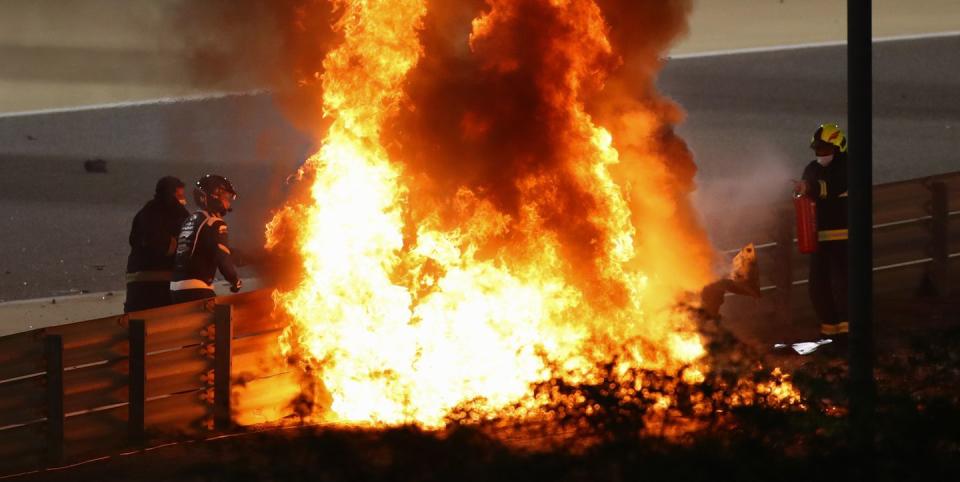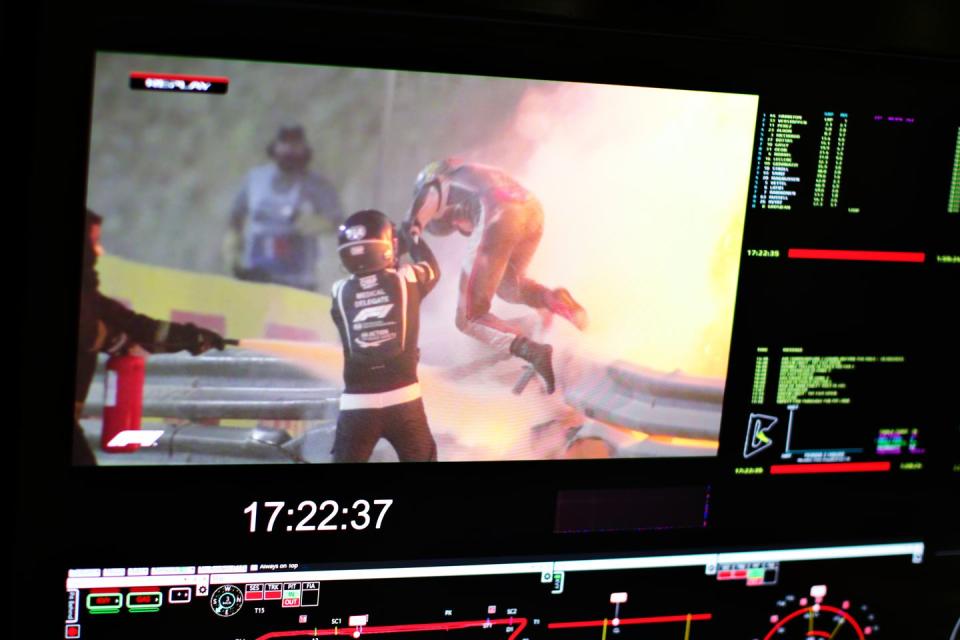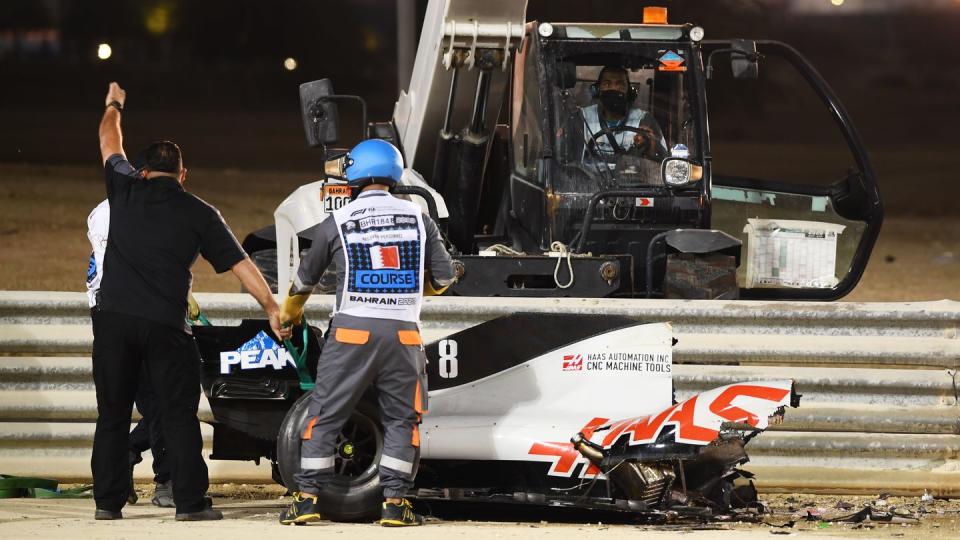Grosjean’s Miraculous F1 Escape From Fireball a Triumph of Science, Training, and a Bit of Luck

FIA officials say safety measures in the sport for the most part did their job in Bahrain on Sunday.
Grosjean crashed in Turn 3 on the first lap Sunday and escaped the fireball in less than 30 seconds.
The car split in half when it went through a guard barrier, and Grosjean escaped with the driver cockpit virtually in tact.
The accident on the first lap of the Formula 1 Bahrain Grand Prix on Sunday that saw Romain Grosjean’s Haas car crash into a steel barrier and turn into a fireball is a reminder of the ever-present dangers in F1.
Lewis Hamilton won his 95th career race, and Red Bull teammates Max Verstappen and Alex Albon completed the podium. This race, however, will always be known for Grosjean's great escape.
The last time we saw such an accident in Formula 1 was at Imola in 1989 when Gerhard Berger’s Ferrari crashed at the old Tamburello corner. That is 31 years ago.
The fact that half of Grosjean's car went through a three-tier steel barrier was equally shocking and reminiscent of the worst days of the sport in the 1970s, but much has changed since then. Grosjean emerged without any major injuries, although he suffered second degree burns to the back of both of his hands.
There will be an in-depth investigation into the crash, as there are with every major accident in Formula 1.

“We will do a complete investigation from an FIA perspective, from start to finish,” said Michael Masi, the F1 race director. “We will look at car safety, track safety, driver equipment. The whole thing. What we saw today is a testament to the ongoing pursuit of safety in all areas. The process will continue.
"You learn each and very time. From the bits and pieces I have seen, everything did what it looked like it was supposed to do but I haven’t looked in any great detail at this point and there will be weeks of ongoing investigation by the FIA Safety Department. I think from a casual viewers perspective, it is a testament to the immense safety features we have. It was a great display of everyone working together very quickly, knowing what their roles are and getting in and doing it. A credit to everyone involved."
The forces involved in the crash were huge with the impact registering 56 g. The survival cell of the car went into the barrier and turned, which meant the rear of the car, from behind the fuel cell was ripped off. Some fuel was sprayed out with the impact and probably ignited because of the contact with the batteries in the energy recovery system.
Although it was dramatic to see, the fire was not as large as one might expect with a full tank of fuel and there is no doubt that this will figure in the investigation.


 Yahoo Autos
Yahoo Autos 